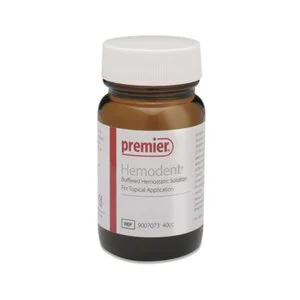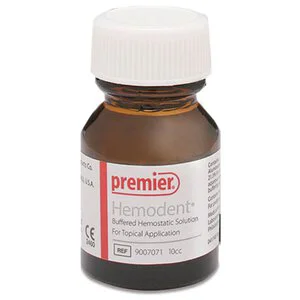April Savings Event | $100 Off $750 or $150 Off $1,000 - Use Code: APRIL - Ends April 20 | Shop Now
Filter Products
Filter Products
New Arrivals
Retraction Materials
As low as
$15.19As low as
$94.08As low as
$64.22
Added to your shopping cart
Product Availability by Store Location
Hours
What are the types of retraction in dentistry?
Gingival retraction is a fundamental step in dental procedures to ensure precision and accuracy in impressions, ensuring optimal restorative outcomes. There are primarily two types of retraction techniques:
- Chemical Retraction: This technique involves the application of medicated hemostatic solutions or gels to the gingival tissues. These solutions typically contain hemostatic agents, such as aluminum chloride, and astringents that facilitate tissue displacement. Chemical retraction is especially beneficial in cases where there is minimal space for traditional mechanical methods. It promotes hemostasis, controls bleeding, and improves visibility during the impression-taking process.
- Mechanical Retraction: This approach relies on physical tools to mechanically displace the gingival tissues and create the necessary space for accurate impressions. One commonly used method is the insertion of retraction cords into the sulcus. These cords, made from braided cotton or knitted threads, push the gingiva away from the tooth, creating a well-defined area for impression materials. Mechanical retraction is often preferred when a more controlled and predictable displacement of tissues is required, and it is beneficial in cases with adequate space for manipulation.
What is the most common type of gingival retraction used?
Gingival retraction cords remain widely used and effective for creating space between the tooth and gingival tissue. Various options are available for tailored approaches based on patient needs.
What materials are used in gingival retraction cords?
Various materials are employed in gingival retraction cords, each offering unique characteristics to address specific clinical requirements.
- Braided Cotton Cords: Widely utilized, braided cotton retraction cords exhibit excellent flexibility and absorbency. These cords effectively displace gingival tissues, creating an ideal environment for accurate impressions.
- Knitted Cords: Comprised of twisted or braided threads, knitted cords enhance durability and the ability to maintain their shape during placement. The knitted design provides a balanced combination of strength and flexibility, promoting effective tissue displacement while minimizing fraying or tearing during use.
- Non-Impregnated Cords: Often used in conjunction with a separate hemostatic agent, non-impregnated cords offer versatility in retraction procedures. This type of cord allows for customized application of astringents, ensuring precise control over hemostasis while maintaining the tactile advantages of the cord material for effective tissue management.
What are alternatives to gingival retraction cord?
- Gingival Retraction Paste: This cordless option simplifies retraction by offering a paste infused with astringents and hemostatic agents.
- Vinyl Polysiloxane (VPS) Impression Material: This can be used as an alternative for light retraction, providing both impression and retraction.
What instruments are used for gingival retraction
- Gingival Retraction Cord Packer: Used to pack retraction cord into the sulcus efficiently.
- Cord Scissors: Designed for precision cutting of retraction cords.
- Gingival Retractors: Instruments like hand instruments or laser devices aid in tissue displacement.























